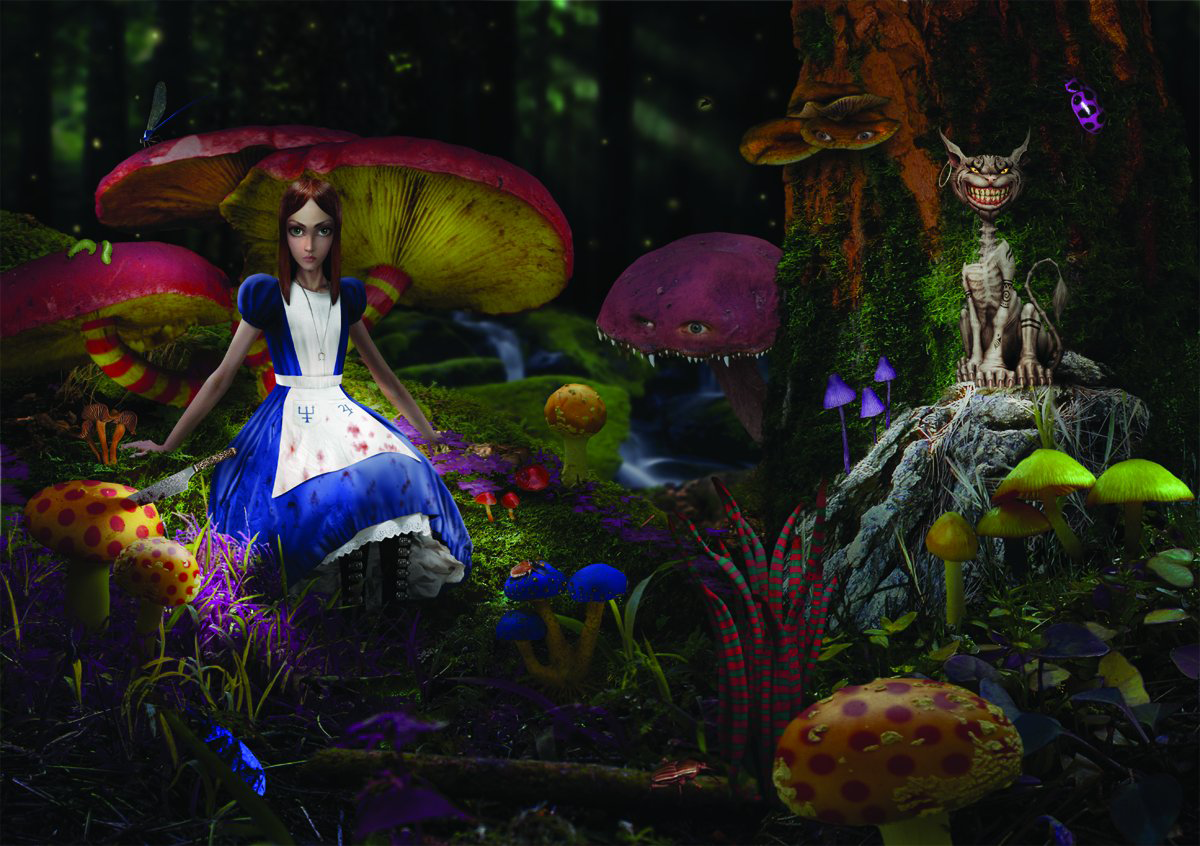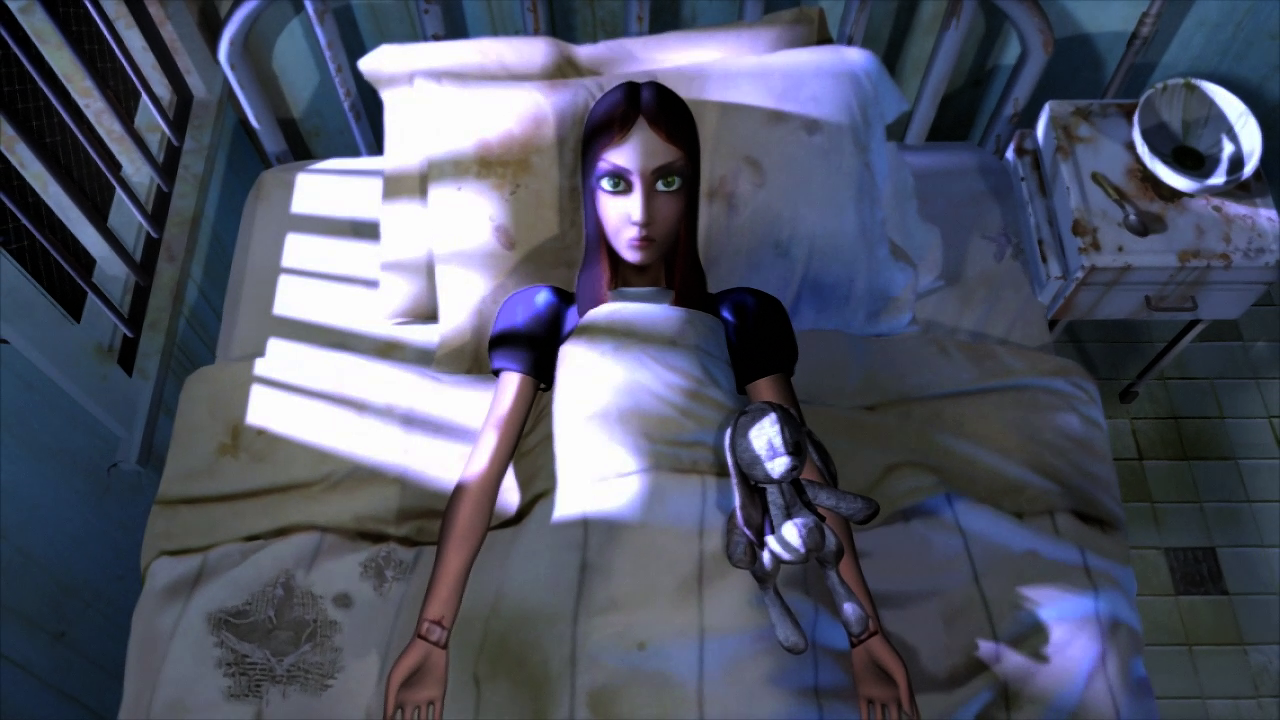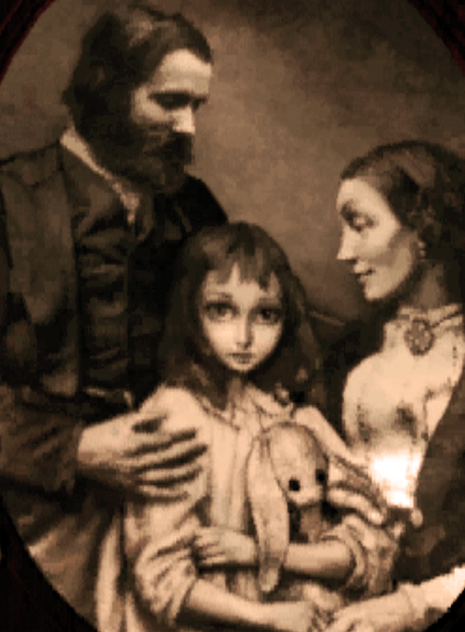
On Friday, September 25th at 10:00 am, our social media will host a live stream with American McGee, the legendary game designer and creator of American McGee's Alice. The air will take place quite early, so we recommend stocking up on your favorite coffee. In addition to Alice, American has also worked on landscapes in the Doom and Quake games with John Carmack and John Romero. Let's remember his main project and how the former dishwasher was able to make one of the most atmospheric games of the 2000s.




When John Carmack is your neighbor
American was born on December 13, 1972 in Texas.
The unusual name American (American) was given to him by his mother and he was often asked if it was his real name. Here's what he himself says about it:
My mom was a hippie and said that if she hadn't called me American, then most likely I would have become Obnard or Marrakech. It's good that I'm not Obnard.
At eleven, American received his first computer from his uncle John McGee. On this computer he tried to program in BASIC for the first time.
When the American was sixteen, his school years were over, and he had to earn a living. McGee worked as a dishwasher, ring grinder in a jewelry workshop, and took orders at a music store. Working in a car repair shop, American managed to write simple CRMs for inventorying and tracking customer requests.
In 1992, American McGee became a neighbor and soon became friends with John Carmack, a programmer, co-founder of id Software and one of the key creators of Doom. Carmack hired Americana to work for tech support.
John Carmack lived next to me. He came home in a Ferrari, and I came back, all smeared with engine oil. I left high school and worked as a mechanic, fixing German cars. Until I met John, I thought that my future was predetermined - to fix all sorts of mechanical things all my life. This fate is not so terrible, I liked working. But fate's plans for me changed dramatically. I started using the tech support phone and was a tester.
Over the course of a year, American has grown to become a level designer and music manager. In his new role, he designed the landscape for Doom, Quake and Quake II. The guys did not break up very well and after four years McGee moved to Electronic Arts.
I didn't leave the studio myself, I was fired. I still don't know why. We had just finished Quake 2, and I was prototyping levels for Quake 3. I was once called into a meeting room (called the “creativity room”) and told it was time to leave. They say people didn't want to work with me. The next memory - I am going home, crying with fear. After a while, I realized that it was for the better: it was awful to work in the studio, I had to stay up late, and my colleagues constantly let me down and tried to make nasty things for me. I put up with it because of the money.
In 1998, McGee was promoted to Creative Director at Electronic Arts, one of the largest companies in the video game industry. Here he began working on his main creation - the game about Alice from Wonderland.
The world of the "Alice" dilogy is only nominally based on the fairy tales of Lewis Carroll. Alice is a mentally ill girl, and Wonderland is a reflection of her spiritual trauma, in which she is trying to find or completely lose herself. According to the plot, Alice is already 18 years old and she is in a psychiatric clinic, where she ended up after her entire family died in a fire. Alice is the only survivor, fell into a coma and blames herself for the death of her parents. When she smelled smoke, she dreamed of a wonderland and during the events of the game, which takes place entirely in her imagination, she again finds herself in Wonderland - but already disfigured by her psyche, full of danger and cruelty.
In Americana McGee's games, the artistic and conceptual aspects prevail over what gamers are usually used to paying attention to. We can safely say that he is Tim Burton from the world of the gaming industry, a designer whose imagination over and over again gives birth to new psychedelic projects that, if not become cult, then at least remain in plain sight for a long time.
Alice turned out to be stunningly beautiful, with a thick, dense atmosphere that you can literally cut with a knife. Released in 2000, the game strengthened Americana's fame and received a lot of positive reviews from critics.
Just look at these concepts




After the release of American McGee's Alice, McGee left Electronic Arts and in 2003 formed his own company, The Mauretania Import Export Company.
What is McGee doing now?
In 2007 American moved to Shanghai and opened Spicy Horse Design House. Here's what he himself says about working in China:
To some extent, the decision to move to China and start a video game studio there is a lot like the idea of opening a grocery store on the moon. I had to not only learn a new language and accept a culture alien to you, but also change myself. Consider that I have become a completely new person. At Spicy Horse, I recruit the most talented people I can find. They can learn a lot in this studio, and it seems to me that in this way I manage to help people the way John Carmack did in his time.
In 2008, the studio launched the American McGee's Grimm series of games, and in 2009 American opened a subsidiary company, Spicy Pony, aimed at developing games for the iPhone. They have already released DexIQ and American McGee's Crooked House games.
What language will the broadcast be in?
Completely in English. The moderator will be Sergey Ulankin, editor-in-chief of the Kanobu website
How not to miss the beginning?
Click on the bell on YouTube, on Instagram it is enough to subscribe to our account - you will immediately receive a notification of the beginning